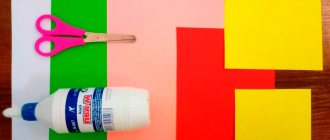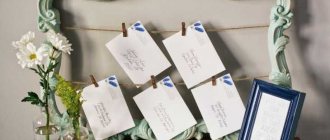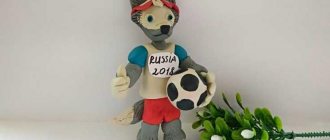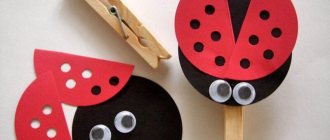What is necessary
In order to carry out the experiment, the following components are required:
- acetic or citric acid;
- baking soda;
- water.
It is better to experiment using citric acid, because it does not have such a strong odor and is also safer than vinegar.
The ingredients are taken in the following proportions:
- for 100 ml of water 1 tsp. vinegar, 1 tsp. soda;
- per glass of water 2 tsp. soda, 1 tsp. citric acid.
There are several tricks that will allow you to carry out the reaction more violently and effectively:
- For a more vigorous reaction, regular water can be replaced with carbonated water.
- To add color to the components, you should add gouache or food coloring.
- To make the foam thick, you need to add a drop of detergent to the ingredients.
- You can also add sparkles or sequins for added effect.
Big Bang
Children will especially like this drink. To simulate a big bang, you need the following:
- You will need a coating that is not afraid to get dirty, so get ready for a mess.
- You will need a decent sized container, such as a liter plastic bottle.
- To shape the appearance of the product you will need clay or foil, you can use plasticine. To add realism, paint the volcano black and brown. It will take some time for it to dry.
- Add hydrogen peroxide. You need 6 percent peroxide, pour half a cup of peroxide into the container located in the product. Be careful and careful when using peroxide. If you come into contact with hydrogen for a long time, you can get hurt, or the peroxide can get into your eyes and harm them. Children are not allowed to use peroxide. To make the eruption even more spectacular, you can use a 30% peroxide solution, but it will be extremely difficult to obtain.
- Mix about 3 drops yellow food coloring and 7 drops red. Then add two tablespoons of dishwashing detergent to the resulting mixture.
- Stir a tablespoon of dry yeast in a small bowl with 3 tablespoons of water.
- Pour the yeast into the resulting product and step away.
Active volcano
You can make a volcano with your own hands. There are three options:
Crafts made from plasticine or salt dough
To conduct the experiment you need:
- an elongated small vessel made of plastic or glass (jar for soap bubbles or baby food);
- plasticine;
- water;
- vinegar;
- tray;
- sodium bicarbonate.
Perform the following series of actions:
- take a vessel and cover it with plasticine;
- place a homemade volcano on a tray;
- mix water and vinegar, pour into the craft;
- add baking soda. If you add it gradually, the reaction will last longer.
Recommended for you:
How to clean silver with soda at home
To make the lava colored, you need to mix baking soda and food coloring. Sparkles are added for entertainment.
A volcano made from a plastic or glass bottle with a narrow and high neck
A glass bottle will be more stable. Instead of a bottle, you can use a plastic funnel. The bottom of the funnel is covered with cling film or foil.
You can also make a funnel with your own hands. To do this, cut off the top of the plastic bottle, about 10 cm. In order to carry out the experiment, you need to:
- take the vessel, place it on a tray;
- pour soda there;
- Gradually pour water mixed with vinegar into the vessel.
Expert opinion
Did you know?
Boiling occurs due to the interaction of the molecules of the components used, since baking soda releases carbon dioxide.
This option most realistically resembles a volcano
To create it you will need:
- 1.5 l plastic bottle;
- plastic lid (for mayonnaise or sour cream);
- regular and masking tape;
- gypsum plaster;
- acrylic paint;
- paper;
- foil;
- base.
To make a craft you need:
- cut the bottle to the required height, place it on the lid, secure with tape;
- install the future volcano on a base (plywood or plastic backing) and secure with tape;
- give the bottle a cone shape: crumple small pieces of paper, then attach to the bottle with masking tape;
- Secure the foil on top of the paper with masking tape;
- dilute the gypsum plaster to a thick sour cream state, coat the product with it;
- after the plaster has dried (approximately 2 days), paint the homemade product with gouache in brown-red shades.
To conduct the experiment you should:
- pour a teaspoon of sodium bicarbonate inside the product;
- add food coloring or red gouache and a drop of detergent;
- carefully pour in the vinegar.
Then an eruption occurs. This product can be reusable. Acrylic paint does not deteriorate after the eruption.
From baking soda
To make the product, you will need: water, vinegar, diluted food coloring, dishwashing detergent, baking soda.
Procedure for creating a volcano:
- To begin, take about a glass of baking soda and add three tablespoons of water to it, thus obtaining a mixture for sculpting a volcano. If you want to make a big volcano, then add more water.
- Mix the baking soda well and make a mountain. Let it dry, this will take some time, about 3-4 hours.
- Then color the craft with food coloring.
- Place the product on the container, add a little vinegar, about a teaspoon and a tablespoon of detergent. As a result, foam and hissing will pour out of the volcano.
Boiling water in a glass
When you don’t have plasticine or a bottle at hand, you can use an ordinary glass to set up the experiment. The child can be told that the water will now boil without exposure to heat.
Recommended for you:
How to make dry ice from soda: do it yourself at home
To do this you need:
- Cup.
- Lemon acid.
- Sodium bicarbonate.
- Water.
Follow these steps:
- Place the vessel on the tray;
- Add 2 tsp to a glass of water. NAHCO3;
- Add a teaspoon of lemon acid.
Instead of soda, you can add vinegar or citric acid (2.5 tsp of vinegar or citric acid per 500 ml of water).
Then boiling water is obtained. When sodium bicarbonate and citric acid or vinegar come into contact with water, they interact, causing the water to boil.
Lake with boiling water
To conduct the experiment you need:
- Take a pan filled with water. She will be an imaginary lake.
- Fill two containers: one with sodium bicarbonate, the other with citric acid.
- Show your child that if you add soda and acid to a lake, the water will boil.
This activity will keep your child occupied for a while. If you take a stick and then stir the water with it, the water will bubble more.
This is due to the fact that the molecules of soda and acid will interact faster when stirred.
How to inflate a balloon without hands?
What will you need for the experience?
How to conduct an experiment?
Prepare all materials and place them at an accessible distance. A solution of soda and water should be poured into a glass bottle. Then pour vinegar into the bottle and quickly put a balloon on the neck of the bottle. It is important to secure the ball well on the neck with tape so that the ball does not rip off. Almost immediately you will notice how carbon dioxide fills the balloon, inflating it.
rushing river
To create a river that will boil you will need:
- Plastic pipe.
- Sodium bicarbonate.
- Vinegar.
- Water.
- Food coloring
Do the following:
- Take a plastic pipe and cut it lengthwise.
- Place a makeshift river bed in the bathtub.
- Mix soda and citric acid in a 2:1 ratio.
- Prepare a vessel with water.
- For added color, you can add food coloring to the water or soda mixture.
- Pour baking soda and vinegar into the channel.
- Gradually add water.
From the actions taken, the water will run and foam. If you close the drain, the bath will be a kind of colored lake.
colored lava
You can also make many volcanoes with different colored dyes.
To organize the experience you will need:
- Small cups or baby food jars in the amount of 6 pcs.
- Gouache of different colors.
- Sodium bicarbonate.
- Water.
- Vinegar.
- Tray.
The following actions are performed:
- Balls of 6 different colors are rolled out of soda and gouache.
- Place the vessels on a tray.
- Pour vinegar into them.
- Place prepared balls into each vessel.
Recommended for you:
How to find out the gender of a baby using baking soda at home
A colorful violent reaction will occur. You can also watch how different colors are mixed on a tray.
Making a fairytale island
You can build an island in a large plastic container. Pour real water and line the bottom with round pebbles. Make a container for the volcano from a baby food jar or an old glass. For the mountain inside which the container will stand, you need to make a cardboard model; your child will be happy to cover it with plasticine.
The sequence of making a volcanic mountain:
- cut out a circle of the required diameter from thick cardboard;
- make a cut from the edge to the center of the circle;
- roll up a cone;
- the edges of the cone are fastened with a stapler or tape;
- cut off the upper part of the cone at a height equal to the container chosen for the volcano;
- place the container inside the cone.
I coat the top of the mountain with plasticine. To do this, roll out small brown plasticine cakes and stick them to a paper cone, completely covering the cardboard. The top of the volcano can be made of red plasticine, which will imitate hot lava.
They place a volcanic mountain on a dry island of pebbles. They are seated around small rubber animals that are among children's toys. Multi-colored amazing dinosaurs or wolves, foxes, bunnies, bears and other inhabitants of the forest and jungle. Depending on what animals were planted, vegetation for the island is selected. Large tree ferns and horsetails for dinosaurs, and ordinary fir trees and birches for bunnies and foxes.
Plastic plants are also often sold in sets for children's games. You can use a leaf of a living fern and twigs of plants if it is summer outside.
Plants can also be molded from plasticine, made from threads and beads or ordinary cardboard.
You can make small houses out of cardboard for plastic Indians and soldiers. It is better to use cardboard to make plants and houses when the island is in a container with blue-dyed sand instead of water or on a blue plasticine sea.
Precautions when working with chemicals
Even regular baking soda and vinegar can be dangerous if used incorrectly.
In order for the experiments to bring joy and to avoid any troubles, it is necessary to follow certain safety rules:
- All experiments are carried out under the close supervision of adults. Children should not be allowed to experiment with chemicals on their own.
- Prepare towels in advance in case a bubbling liquid spills to clean up.
- When conducting the experiment, do not allow the mixture to come into contact with exposed areas of the body, as the liquid can cause burns. It is better to carry out experiments with rubber gloves. If the solution gets on the skin, immediately rinse the area with plenty of warm water.
- When seething occurs, you cannot lean close to what is happening. Splashes may get on the eyes or skin.
- After the experiment, you must immediately remove all chemicals out of the reach of children. Drain all the water and wash the dishes.











